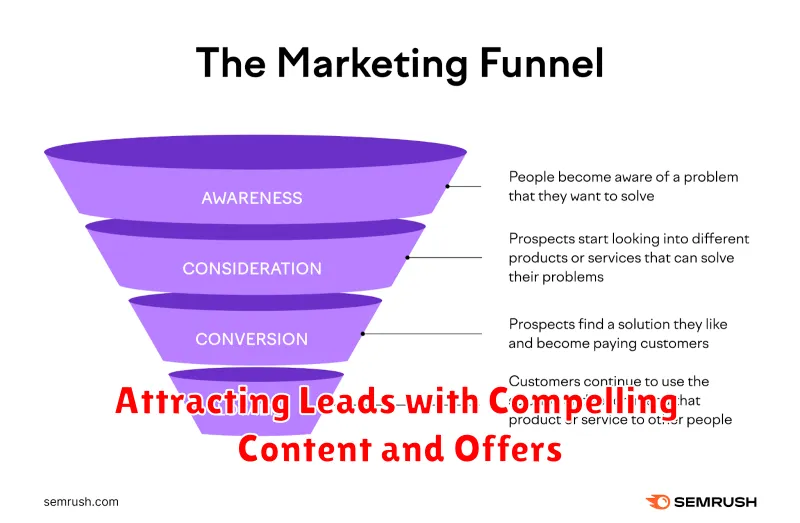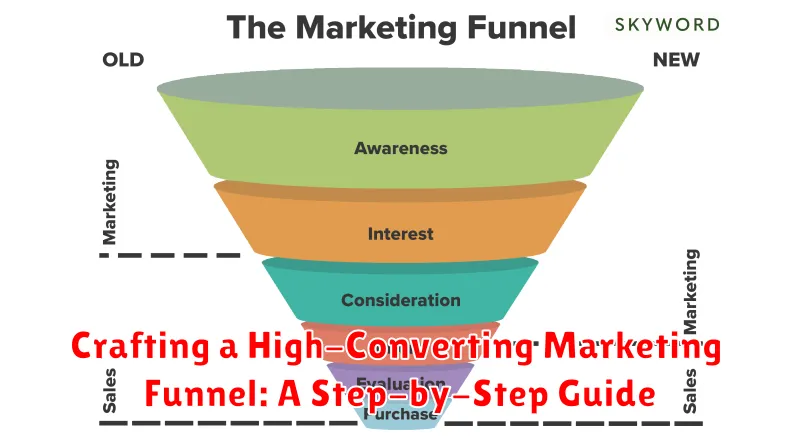In today’s competitive digital landscape, a high-converting marketing funnel is essential for any business aiming to thrive. This step-by-step guide will equip you with the knowledge and practical strategies to craft a marketing funnel that effectively attracts, engages, and converts prospects into loyal customers. We’ll delve into the key stages of a successful marketing funnel, from awareness and interest to decision and action, providing actionable insights to optimize each step for maximum conversion rates. Learn how to tailor your marketing messages, content, and offers to resonate with your target audience at every stage of their buying journey.
Whether you’re a seasoned marketer looking to refine your existing funnel or a beginner just starting out, this comprehensive guide will provide valuable insights into building a high-converting marketing funnel. We’ll explore proven techniques for lead generation, nurturing, and conversion, empowering you to transform your marketing efforts into a powerful engine for growth. By understanding the principles of a high-converting marketing funnel and implementing the strategies outlined in this guide, you can significantly increase your conversion rates, boost your return on investment (ROI), and ultimately achieve sustainable business success.
Understanding the Marketing Funnel and Its Stages
A marketing funnel visually represents the customer journey from initial awareness to final purchase. It’s a crucial framework for understanding how to effectively guide potential customers towards becoming paying customers and, ultimately, brand advocates. By understanding each stage, marketers can tailor their strategies and messaging for optimal impact.
Key Stages of the Marketing Funnel:
- Awareness: The top of the funnel where potential customers become aware of your brand or product. This often happens through marketing efforts like social media, advertising, or content marketing.
- Interest: Once aware, prospects begin to show interest and seek more information. They might visit your website, read reviews, or compare your offerings to competitors.
- Desire: At this stage, the prospect develops a desire for your product or service. Targeted messaging and compelling content play a vital role in fostering this desire.
- Action: The bottom of the funnel where the prospect takes the desired action, such as making a purchase, signing up for a trial, or requesting a quote.
Defining Your Target Audience and Their Needs
A crucial step in crafting an effective marketing funnel is precisely defining your target audience. Understanding their needs, motivations, and pain points is essential for tailoring your messaging and offers to resonate with them.
Begin by creating detailed buyer personas. These semi-fictional representations of your ideal customer should encompass demographic information (age, location, income), psychographic information (values, interests, lifestyle), and professional details (industry, job title, company size).
Consider their online behavior: What platforms do they frequent? What content do they consume? What are their preferred communication channels?
Most importantly, identify their needs and pain points. What problems are they trying to solve? What solutions are they seeking? Understanding these key elements will allow you to position your product or service as the answer they’ve been searching for.
Attracting Leads with Compelling Content and Offers

This stage focuses on capturing the attention of your defined target audience and drawing them into your funnel. Content is king here. Create valuable, relevant, and engaging content that addresses their pain points, answers their questions, and provides solutions to their problems.
Consider various content formats such as blog posts, articles, infographics, videos, and interactive quizzes. Offer lead magnets – valuable resources like ebooks, checklists, templates, or webinars – in exchange for their contact information. This allows you to nurture the relationship and guide them further down the funnel.
Promote your content across relevant channels where your target audience spends their time. This could include social media, search engine optimization (SEO), email marketing, and paid advertising. Optimize your content for search engines to ensure it reaches the right people organically.
Strong calls to action (CTAs) are essential at this stage. Encourage your audience to take the desired next step, whether it’s downloading a lead magnet, subscribing to your newsletter, or visiting a specific landing page. A/B test different CTAs to determine which resonates best with your audience and drives the most conversions.
Nurturing Prospects with Personalized Messaging and Engagement
Once you’ve attracted leads, the nurturing phase begins. This stage focuses on building relationships and providing value to move prospects further down the funnel. Personalized messaging is key here. Tailor your communication to address individual needs and pain points demonstrated by their engagement with your content and offers.
Engagement is crucial for nurturing. Provide valuable content through various channels, such as email sequences, targeted social media ads, and retargeting campaigns. Offer webinars, free trials, or exclusive content to keep prospects engaged and demonstrate your expertise. Track their interactions to understand their interests and further personalize your messaging.
Consider segmenting your audience based on their behavior and preferences. This allows for more effective targeting and increases the relevance of your messaging. By offering personalized content and consistent engagement, you build trust and position your brand as a valuable resource, ultimately increasing the likelihood of conversion.
Converting Leads into Customers with Targeted Calls to Action
This stage focuses on turning nurtured prospects into paying customers. A compelling call to action (CTA) is crucial. It’s the final nudge that encourages prospects to take the desired action, completing the conversion.
Clarity and specificity are paramount. Vague CTAs like “Learn More” are less effective than action-oriented CTAs such as “Download Your Free Guide Now” or “Get a Personalized Quote.” The CTA should directly relate to the value proposition offered and clearly communicate the benefit the prospect will receive.
Placement and design also play a key role. A prominently displayed CTA button with contrasting colors and concise wording can significantly impact conversion rates. Testing different CTA variations, such as button color, text, and placement, can further optimize performance.
Consider the user experience. Ensure the steps following the CTA are seamless and intuitive. A complicated or lengthy checkout process, for example, can lead to abandoned carts and lost sales. Streamlining the conversion process is essential for maximizing results.
Building Customer Loyalty and Advocacy Through Ongoing Engagement
Acquiring a customer is a significant achievement, but the journey doesn’t end there. Cultivating loyalty and transforming satisfied customers into brand advocates is crucial for long-term success. This stage focuses on building strong relationships and providing ongoing value.
Consistent communication is key. Engage with customers through email newsletters, personalized offers, and exclusive content. Acknowledge their feedback and address their concerns promptly. Loyalty programs can incentivize repeat purchases and reward engagement.
Encourage customers to share their positive experiences. User-generated content, such as reviews and testimonials, builds trust and social proof. Creating a community forum or platform fosters a sense of belonging and facilitates interaction among customers.
Analyzing and Optimizing Your Funnel for Continuous Improvement

A high-converting marketing funnel isn’t static; it requires continuous monitoring and optimization. Regular analysis helps identify areas for improvement and ensures your funnel remains effective.
Begin by tracking key metrics. These might include conversion rates at each stage, bounce rates, time spent on pages, and click-through rates. Use analytics tools to gather this data and visualize the customer journey.
Identify bottlenecks where leads are dropping off. Are there pages with high bounce rates? Is there a stage with a significantly lower conversion rate than others? Pinpointing these friction points is crucial.
A/B testing is a powerful technique for optimization. Experiment with different versions of your content, calls to action, and even the layout of your landing pages. Track the performance of each variation to determine what resonates best with your audience.
Finally, remember that optimization is an ongoing process. Regularly review your data, implement changes, and continue testing to achieve peak performance and maximize conversions.

